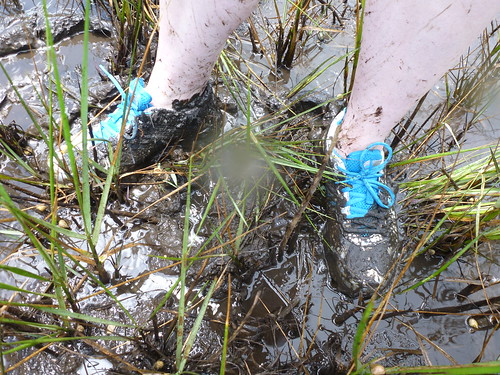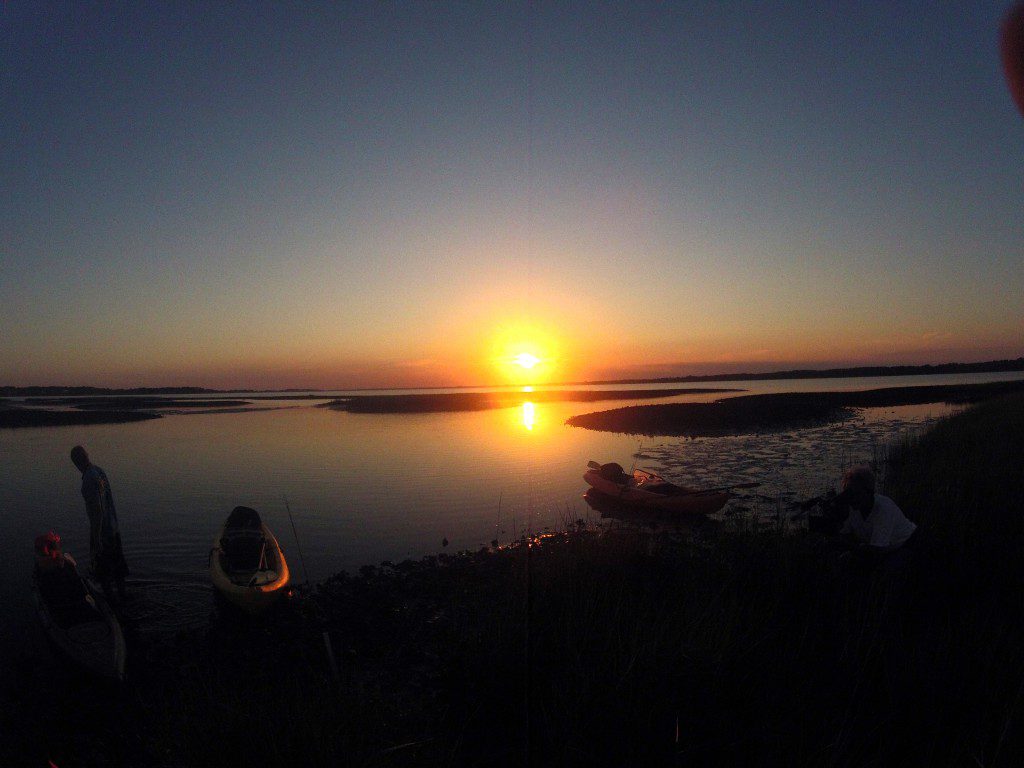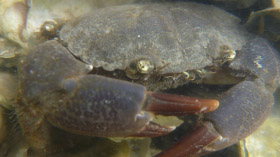Episode 3: Studying Nature Involves Visiting and Standing in Nature
In a couple of weeks we’ll dive right in and look at oyster reefs and their surprising value. In the weeks following, we’ll do the same with salt marshes, seagrass beds, and with the unique diversity of Bay Mouth Bar. Right now, we hope you enjoy watching the WFSU/ Mag Lab SciGirls get their footing in the intertidal zone.
Rebecca Wilkerson WFSU-TV
 The first question I was asked when I became involved in the In the Grass, On the Reef project was if I was afraid to go out in the field and get a little dirty. “Of course not!” was my response. I have always been a fan of the outdoors and love scalloping and kayaking, so of course I would love this. I guess I was expecting to be in the water more than anything. After all, we couldn’t really be going out into anything too messy, right?
The first question I was asked when I became involved in the In the Grass, On the Reef project was if I was afraid to go out in the field and get a little dirty. “Of course not!” was my response. I have always been a fan of the outdoors and love scalloping and kayaking, so of course I would love this. I guess I was expecting to be in the water more than anything. After all, we couldn’t really be going out into anything too messy, right?
The first few shoots I went on were great and went about how I expected they would. But after a few weeks we went to Wakulla Beach, where I discovered exactly why I was asked that particular question when I was hired. Not fully prepared for my experience that day, I had quite a time trying to walk through the mud without getting sucked in knee-deep and losing my shoes, causing others to slow down and get stuck as well while they were trying to help me out. After clawing my way out and finally escaping the mud, I walked on an oyster reef for the first time. While the mud was not nearly as bad at this point, I am a terribly clumsy person. Luckily, I was able to keep my footing and avoid falling on top of oyster shells.
 Although it was exhausting, I still enjoyed my Wakulla Beach experience, as I’ve come to call it. It was definitely a learning experience for me and I loved being able to see the sunset over the reefs. I have yet to master the “quick, light steps” needed to defeat the mud, but I definitely have an appreciation for what our scientists, and many others, go through to set up experiments and collect their data. I also love that getting out in the water (and mud) are a part of my job, not to mention that we get to see some really cool things. Every shoot is a new experience and I notice more about the environment and the animals each time I go out.
Although it was exhausting, I still enjoyed my Wakulla Beach experience, as I’ve come to call it. It was definitely a learning experience for me and I loved being able to see the sunset over the reefs. I have yet to master the “quick, light steps” needed to defeat the mud, but I definitely have an appreciation for what our scientists, and many others, go through to set up experiments and collect their data. I also love that getting out in the water (and mud) are a part of my job, not to mention that we get to see some really cool things. Every shoot is a new experience and I notice more about the environment and the animals each time I go out.
And Also, the Animal Experience
Rob Diaz de Villegas WFSU-TV
One thing we didn’t mention in the video above or in Rebecca’s post are the animals at the sites, which you definitely have to keep an eye out for. Members of the Hughes and Kimbro labs have been pinched by blue crabs and have encountered the occasional snake in the marsh. There are small sharks, the possibility of alligators, and the sting rays that we see and shuffle our feet to avoid stepping on and startling. You keep an eye out for those knowing that they’re a potential danger, though not a pressing threat. During last week’s shoots in Saint Augustine, however, events in the news had us paying serious attention to the smallest animals that are also the ones that attack us most relentlessly. Our country is in the midst of perhaps its worst ever outbreak of West Nile virus. Mosquitos are a fact of the coast. During the day, there is usually enough of a breeze to keep them off you; but since the work we follow is tidally based, activities can occur before sunrise or after sunset, when mosquitos are at their worst. Alligators may look scarier, but it pays to know what the most pressing threat is.
Listen to last Thursday’s Talk of the Nation on preventing West Nile.
Music in the video by grapes. In the Grass, On the Reef theme music by Lydell Rawls.
In the Grass, On the Reef is funded by a grant from the National Science Foundation.


1 comment
Through your comments and pictures I felt I was on the beach with you .We have never been there , but sounds like and interesting day trip…
Comments are closed.